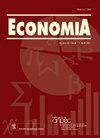Inequality and Crime in Latin America and the Caribbean: New Data for an Old Question
IF 1.4
Q3 ECONOMICS
Economia-Journal of the Latin American and Caribbean Economic Association
Pub Date : 2023-11-08
DOI:10.31389/eco.413
引用次数: 4
Abstract
The purpose of this paper is to revisit the relationship between inequality and crime, with a focus on the Latin America and Caribbean region. We find a significant, positive, and robust association between these variables. Moreover, inequality is the only variable showing this robust regularity. Education levels, economic activity, income per capita, and poverty show weaker and unstable relationships with crime. With due caution, the use of historical variables to instrument for inequality in crime regressions suggests that a causal interpretation of this relationship is plausible. In addition, the analysis of the distribution of crime victimization indicates that men suffer more crime than women, and that the male-to-female homicide ratio grows with inequality. By socio-economic strata, high-income groups suffer more victimization relative to poorer groups in LAC countries, but the poor suffer more homicides. JEL Classification Codes: D63; K42; O15; O54拉丁美洲和加勒比地区的不平等与犯罪:一个老问题的新数据
本文的目的是重新审视不平等与犯罪之间的关系,重点是拉丁美洲和加勒比地区。我们发现这些变量之间存在显著的、正的、稳健的关联。此外,不等式是唯一表现出这种强健规律性的变量。教育水平、经济活动、人均收入和贫困与犯罪的关系较弱且不稳定。谨慎起见,使用历史变量来测量犯罪回归中的不平等表明,这种关系的因果解释是合理的。此外,对犯罪受害分布的分析表明,男性比女性遭受更多的犯罪,并且男女凶杀比随着不平等而增长。按社会经济阶层划分,在拉丁美洲和加勒比国家,高收入群体比较贫穷群体遭受更多的伤害,但穷人遭受更多的谋杀。JEL分类代码:D63;K42;O15;O54
本文章由计算机程序翻译,如有差异,请以英文原文为准。
求助全文
约1分钟内获得全文
求助全文
来源期刊
CiteScore
0.40
自引率
0.00%
发文量
0
审稿时长
24 weeks

 求助内容:
求助内容: 应助结果提醒方式:
应助结果提醒方式:


